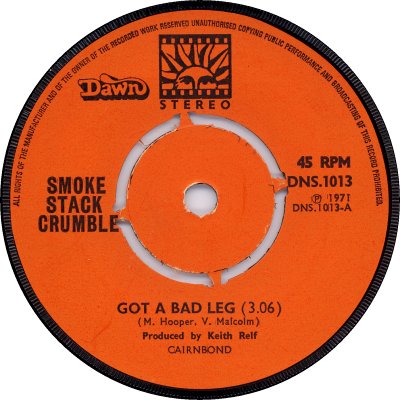
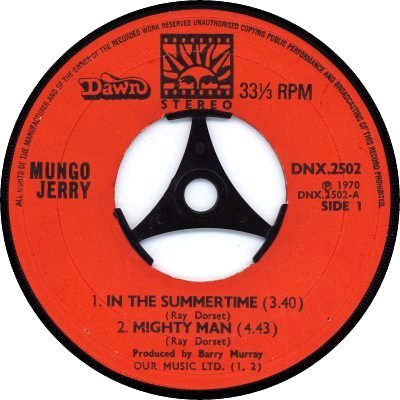
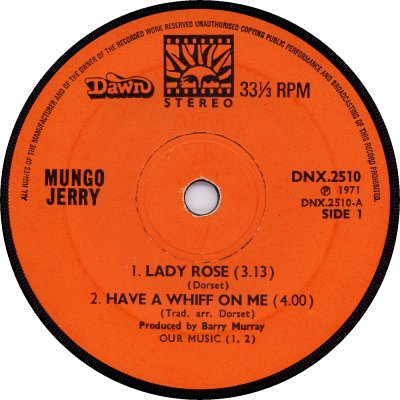


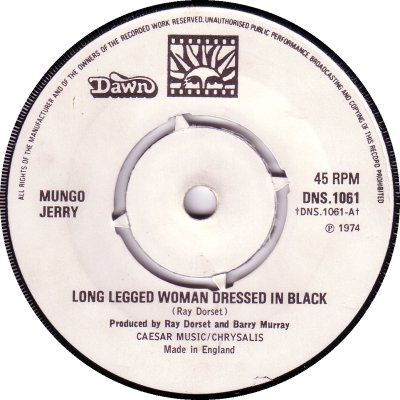
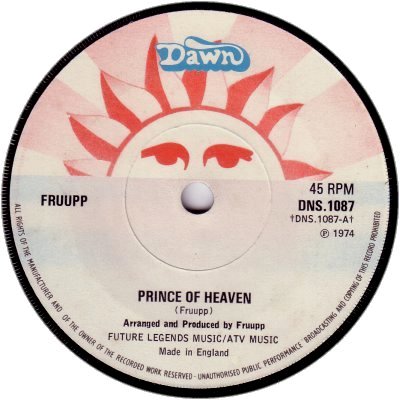

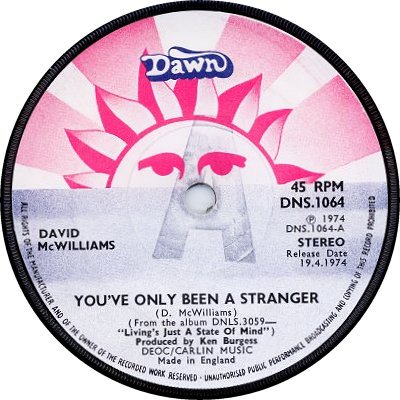
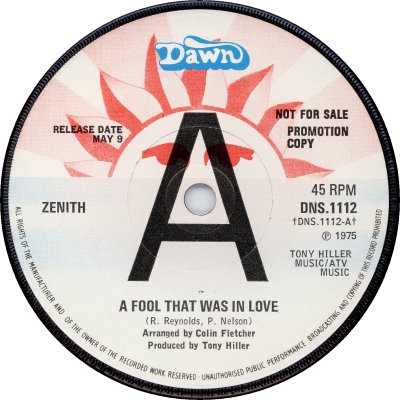
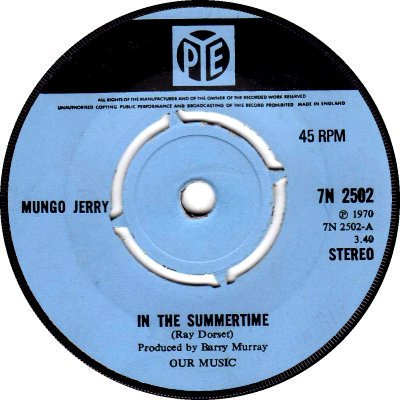

The Progressive label of Pye Records. All the major companies had labels which were dedicated to 'serious' music; Dawn was Pye's answer to Harvest, Vertigo, Neon and the like. It offered a broad spectrum of music, from the Modern Jazz of Trio to the Folk of Prelude, by way of the Jug of Bronx Cheer and the Prog Rock of Irish band Fruupp, but it failed to shift records in large quantities, with the notable exception of those by Jug / Rock 'n' Roll band Mungo Jerry. By the start of 1975 it seems to have lost its focus, and there were few singles on it which would have been out of place on the main Pye label. The Pye management appears to have come to that conclusion, as Dawn was shelved towards the end of that year.
Dawn received its first mention in 'Record Retailer' of the 16th of August 1969, which said that Pye was planning a September launch. 'RR' of the 6th of September confirmed that the launch was to happen 'this week'; it added that the label was aimed at the Progressive market, and that Barry Murray, A&R manager at Pye, would be producing Dawn's acts. Peter Eden was appointed label manager in the spring of 1971 ('RR', 1st May), while 'Music Week' of the 26th of January 1973 observed in passing that Dawn had sourced much of its early material from the Red Bus (q.v.) production company and as a result hadn't had may approaches from other outside producers. From 1970 into 1972 Dawn experimented with thirty-three-and-a-third rpm EPs, a format that was uncommon at that time, but the experiment had been abandoned by the beginning of 1973, leaving the company to devote its energies to the usual LPs and singles. When some of the Mungo Jerry EPs proved popular the 'A' sides were put out as 45 rpm singles, presumably mainly so that they could be played on jukeboxes. These singles had the same numbers as the EPs, but the 'DNX' was replaced by a '7N'. 7N-2502 was issued on the Pye label (10), the others on Dawn. There were some recognizable names on the label: Donovan recorded for it, as did Atomic Rooster, John Kongos and David McWilliams, all of whom had had Chart successes; sadly, they failed to repeat that success for Dawn. Before it expired Dawn notched up a Top 30 hit with Prelude's, 'After The Goldrush' (DNS-1052; 1973), and eight by Mungo Jerry, including two No.1s: 'In The Summertime' (DNX-2502; 1970) and 'Baby Jump' (DNX-2505; 1971).
Singles were numbered in a DNS-1000 numerical series, EPs on a DNX-2500 one. Two different label designs were used, the first of which came in several different colours. It started out as orange (1), had a brief spell as purple (4) with DNSes 1037-40, and returned to orange for DNSes 1041 to 1045. It was very briefly light blue, around the start of 1974 (5), and was white from January to March 1974 (6) - there was some overlap in each case. In March 1974 the original design was replaced with a rather more eye-catching multicoloured one (7), complete with company sleeve (12). Again, the change-over wasn't smooth: there had been a few singles with those kinds of labels issued in October the previous year. 'After The Goldrush' can be found with white, blue, orange or multiculoured labels, presumably because of re-pressings. Manufacture was usually by Pye themselves, but the success of Mungo Jerry's 'In The Summertime' led to other companies doing custom pressings: 'RR' of the 13th of June 1970 mentioned EMI and Decca performing that role along with 'a Slough independent', which turned out to be Linguaphone. These 'outside' pressings led to some copies of that EP having unusual pressing marks or features - the second scan above, with the large spindle hole, is from Phonodisc, while the third, with a deep bevel and a 'canal' a little way out from the spindle hole, is a Linguaphone. Demo copies basically followed the Pye fashion: they had special yellow labels until January 1974 (8), then from January to April they seem to have had either a handstamped 'A' (9) or an 'A' on a circular white sticker put on them instead of any printed markings. They flirted for a short while with small black overprinted 'A's and the appropriate text from April to June 1974, and settled for a large black central 'A' (10) from June onwards.
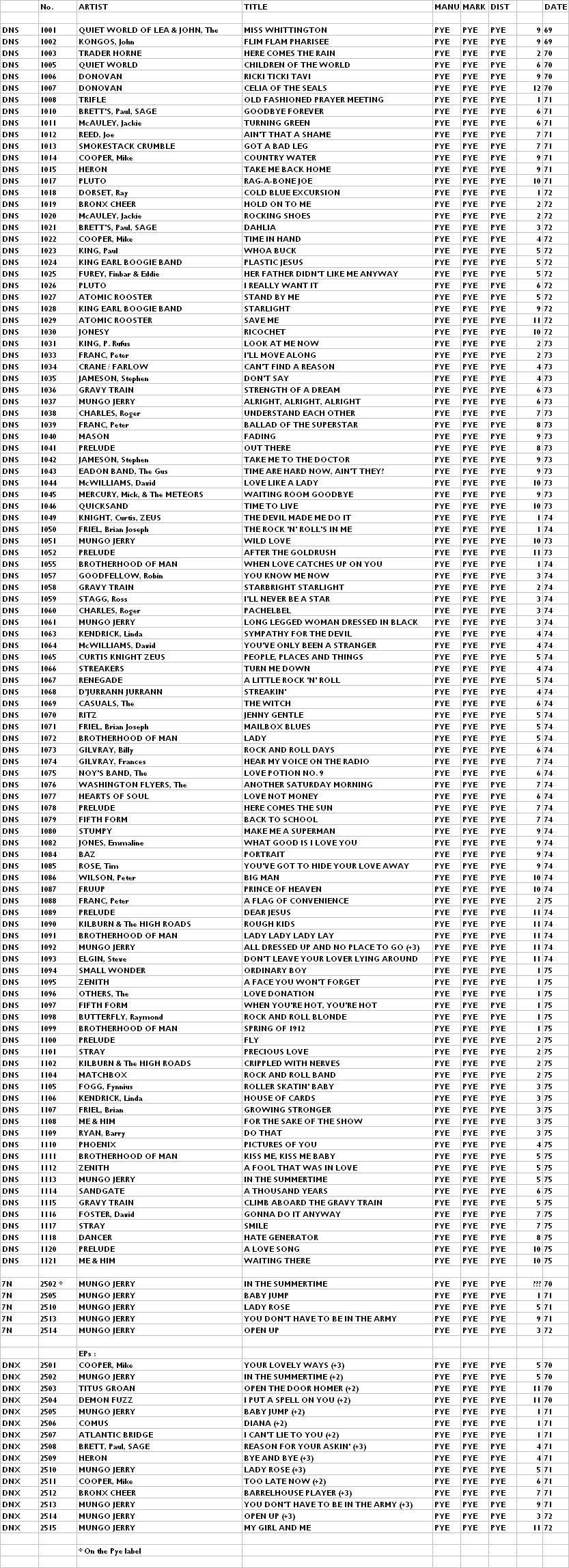


Copyright 2006 Robert Lyons.

